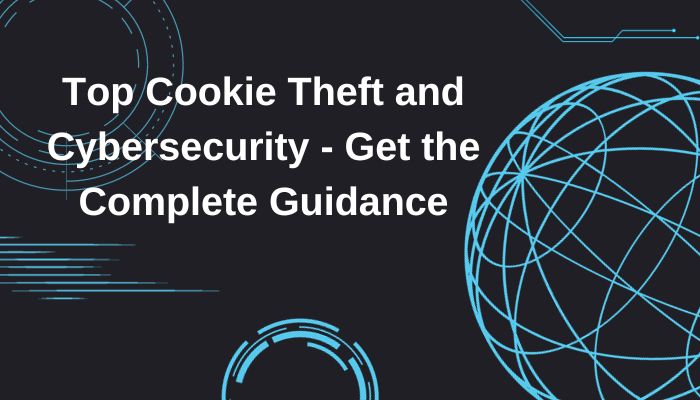
Cookie Theft and Cybersecurity – Know the Dangers of Cookies
Summary:- Cookie logging is yet another cybersecurity threat. In the tech-scape, the intervention and surveillance of hackers on user behaviors, theft of login details, and manipulation of data are certainly increasing. Compared to traditional, in modern one, there is a significant shift in the approaches to data breaches, cyber threats, and malicious activities. Speaking about cookie theft cybersecurity, it retains a widespread diverse impact on users and their data. In this article, we will uncover the different aspects of cookie theft. Let’s first start to understand its meaning and relevance.
Cookie logging; a practice of saving the user’s preferences or cookies on the system to make it easier for users to navigate once visiting the same page or website. Interestingly, businesses or organizations use cookies in both legal and illegal ways.
Moreover, reliable companies utilize cookie logging to deliver a better user experience. On the other hand, cookie theft cybersecurity includes web fraud, misuse of users’ confidential details, malicious actions, and other security threats.
Besides this, there are mainly two types; first or third-party. The majority of cookie theft includes third-party intervention where anonymous actors collect information and use them for malevolent purposes. Now, let’s delve into theft and cookie hijacking.
What is a Cookie Stealing Attack? How Does it Work
Cookie stealing or theft is considered the modern aspect of cyber attack in which hackers gain access to the user’s system including mobile, computer, tab, etc to steal the cookies. The malicious purpose behind these activities is to breach the login information and other confidential details of the users.
There is no doubt that you might have a question: how does it work? So, cookies are stored in the computer as a small text when users visit any website. In this way, it collects the information of users’ sessions or even search preferences that enable remembrance of the website in the system. With this, cookie theft cybersecurity becomes a new factor to hijack the session or sensitive information related to users.
Moreover, various types of cookie stealing offer opportunities for hackers to use the confidential information of the users. Now, we will talk about the most common cookie stealing attack and how to prevent them quickly.
Top 5 Methods of Cookie Theft Cybersecurity
In this section, we will unleash the malicious practices of cookie theft in brief. Therefore, read the below section thoroughly to get a wide understanding of cookie logging attacks.
1. Use of Man-in-the-Middle (MitM) Attacks:- The MitM attacks are among the most prominent practices of cookie stealing. In this case, hackers or cyber attackers clog the communication of users while visiting the website. In addition, the purpose of this method is to capture the cookies of the website session during the transmission. ‘
2. Session Hijacking or Sidejacking:- Once the anonymous actors find the gap, they significantly perform malevolent actions and exploit the information. Further, to get access to the session, these cybercriminals unencrypted the stored cookies and then misused them.
3. Malware Vulnerabilities:- The hackers install malware software for the theft of cookies of the website. It is considered the most significant cookie stealing attack that can affect large numbers of businesses or professionals across the world.
4. XSS Attacks:- The cross-site scripting or XSS attack; one of the malicious practices where cyberattackers insert bad codes in the site to steal the user’s browser cookies history. It is another harmful method to breach the login information or the sensitive data of users.
5. Using Phishing Attacks:- In the interconnected world of the web, the use of phishing methods or attacks is constantly increasing to target the user’s information or data. In this attack, hackers create fake or mimic websites, messages, or emails to gain the user’s login details, hence, it is another way of cookie theft cybersecurity on businesses or any users.
Overall, the above-mentioned methods are the most prominent cookie stealing methods. Moreover, if the hackers hijack the cookie session, it becomes easier for them to manipulate the data or perform any malicious activities on behalf of users.
In this way, these anonymous actors can make unauthorized payments, breach account details, and more. Hence, it is important to know its prevention. Now, we move ahead to learn the methods to avoid cookie theft.
How to Prevent Cookie Stealing Attack? Here’s the Best Solutions
To safeguard from cookie theft, any professional or organization must understand the vital role of implementing web security. For the same, let’s begin to know the expert-suggested practices to prevent cookie theft cybersecurity.
1. Use of Firewall Security Settings
2. Users should visit HTTPS or SSL-certified websites while doing any transaction
3. Education of Users
4. Make a Strong Password
5. Constant Security Audits
By implementing the aforementioned practices, users can prevent the cookie stealing attack. Since these solutions are incorporated under the approaches of cyber security. Therefore, using the foremost and best cyber security services any businesses or users can proactively deal with any cookie attack. The paramount of this security includes identification, analysis, and diagnosis of real-time threats and ever-evolving issues of any technology risk.
Further, it includes the detection of various malware software, preventing unauthorized access, surveillance around the clock, robust cloud security, server protection, secure digital assets or resources, and an experienced team for cyber security management. Besides this, it offers a best-in-class solution for cookie theft cybersecurity.
The Bottom Line
Cookie stealing is one of the serious threats to security. To prevent these unauthorized penetrations, users need to secure their computers or devices from viruses or any other malware. Besides this, we have mentioned the most common cookie theft cybersecurity that breaches the login credential information of the users. Further, we have shed light on the solution. Hence, using the state-of-art technology of cyber security users can secure their personal information regardless of any malicious attack.


